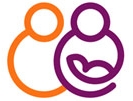Efecto de los ejercicios prenatales del suelo pélvico en el parto y nacimiento.y Effect of Antenatal Pelvic Floor Muscle Training on Labor and Birth
ARTICULO ORIGINAL. CONCLUSIONES: El entrenamiento muscular del suelo pélvico antes y durante el embarazo no afecta el trabajo de parto y expulsivo, o las tasas de complicaciones.
ENLACE AL ARTICULO DONDE PODRÁS ACCEDER AL TEXTO COMPLETO (Previa suscripción)>>
OBJECTIVE: To estimate whether women doing pelvic floor muscle training before and during pregnancy have increased risk of perineal lacerations, episiotomy, vacuum/forceps delivery, or acute cesarean delivery.
METHODS: Participants were 18,865 primiparous women in the Norwegian Mother and Child Cohort Study, conducted by the Norwegian Institute of Public Health. Data were collected by self-completed questionnaires at gestational weeks 17 and 30 and analyzed by logistic regression analysis. Data about obstetric outcomes were obtained from the Medical Birth Registry of Norway. Pelvic floor muscle training was categorized as less than once per week, one to two times per week, and at least three times per week both before and during pregnancy. The results are presented as adjusted odds ratios (OR) with 95% confidence intervals (CIs).
RESULTS: Of women who performed pelvic floor muscle training less than once per week, 7.2% sustained a third-degree or fourth-degree laceration compared with 6.3% of women who performed pelvic floor muscle training at least three times per week. A similar pattern was present for rates of episiotomy (29.1% compared with 24.9%), vacuum/forceps delivery (15.9% compared with 15.0%), and acute cesarean delivery (9.5% compared with 7.5%). Adjusting for factors that might be associated with pelvic floor muscle training and the outcomes under study did not distort the effect of pelvic floor muscle training. Exercising at least three times per week was not associated with third-degree and fourth-degree perineal lacerations, episiotomy, vacuum/forceps delivery, or acute cesarean delivery (adjusted OR 0.86 [95% CI 0.60-1.24], 0.82 [0.67-1.01], 0.95 [0.74-1.22], and 0.75 [0.53-1.05], respectively).
CONCLUSION: Pelvic floor muscle training before and during pregnancy does not affect labor and birth outcomes or complication rates.
LEVEL OF EVIDENCE: II







 Anterior: Cambiando la clásica práctica restrictiva de ingesta en el proceso del parto
Anterior: Cambiando la clásica práctica restrictiva de ingesta en el proceso del parto

 Web MatronasUbeda by
Web MatronasUbeda by 